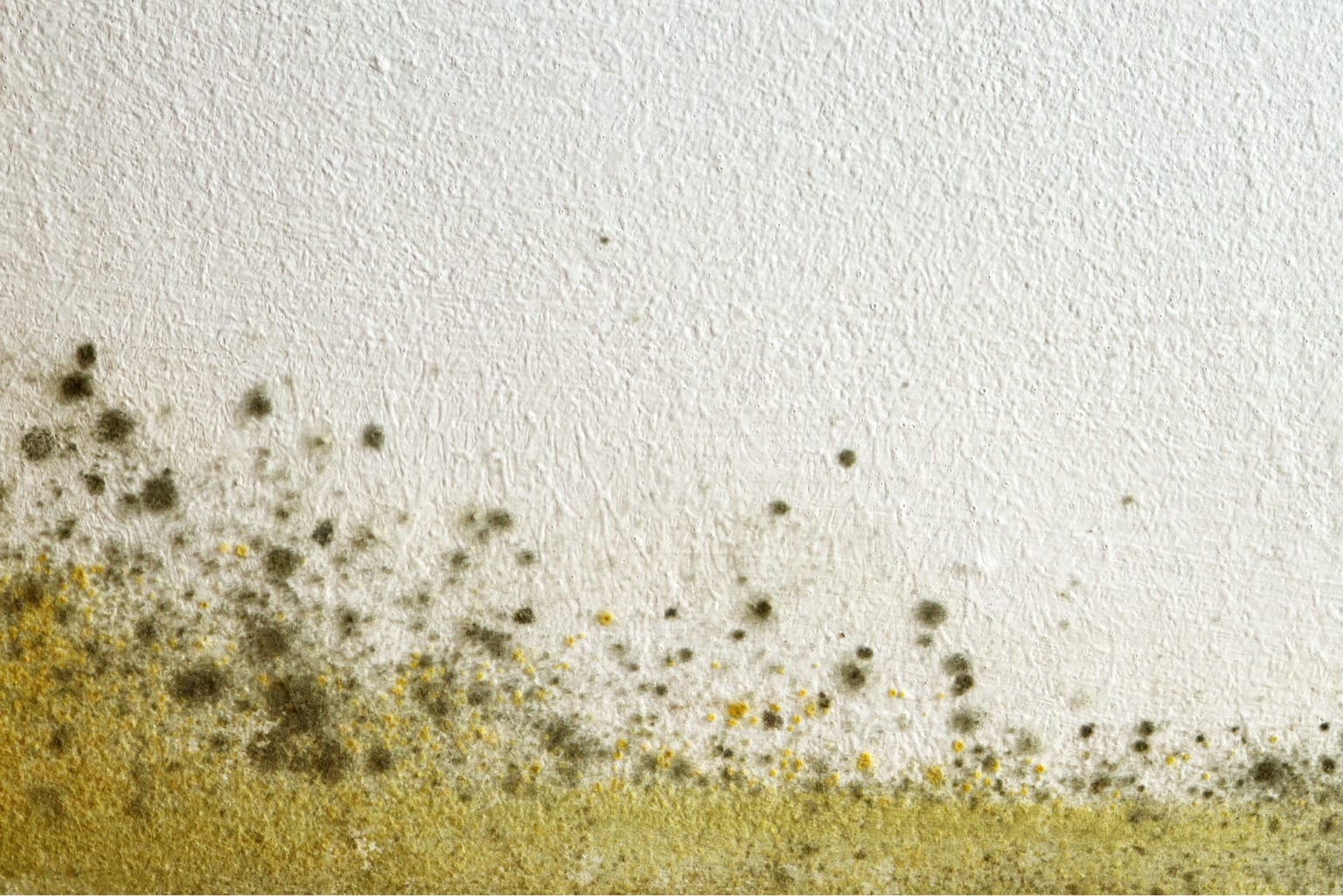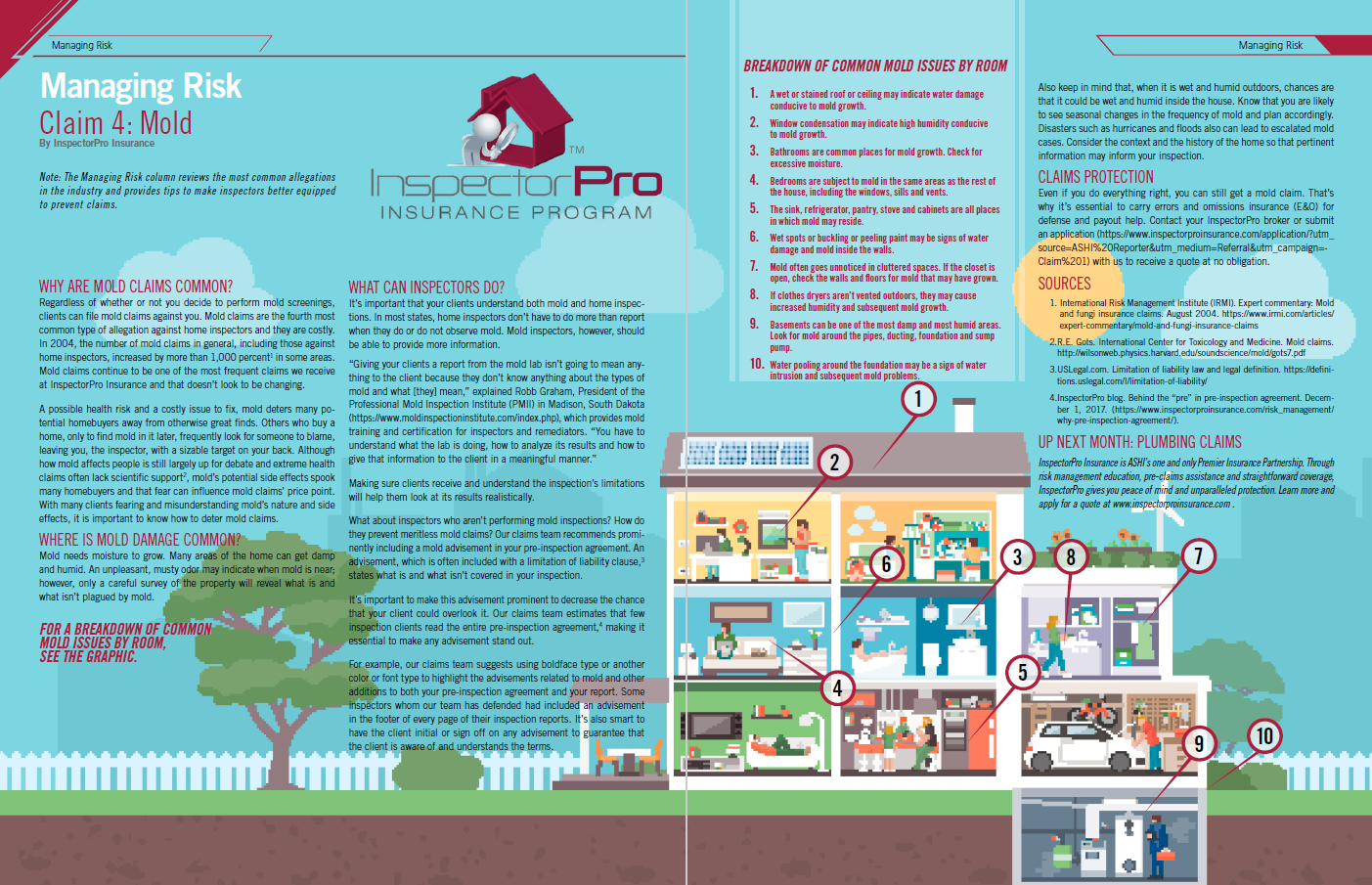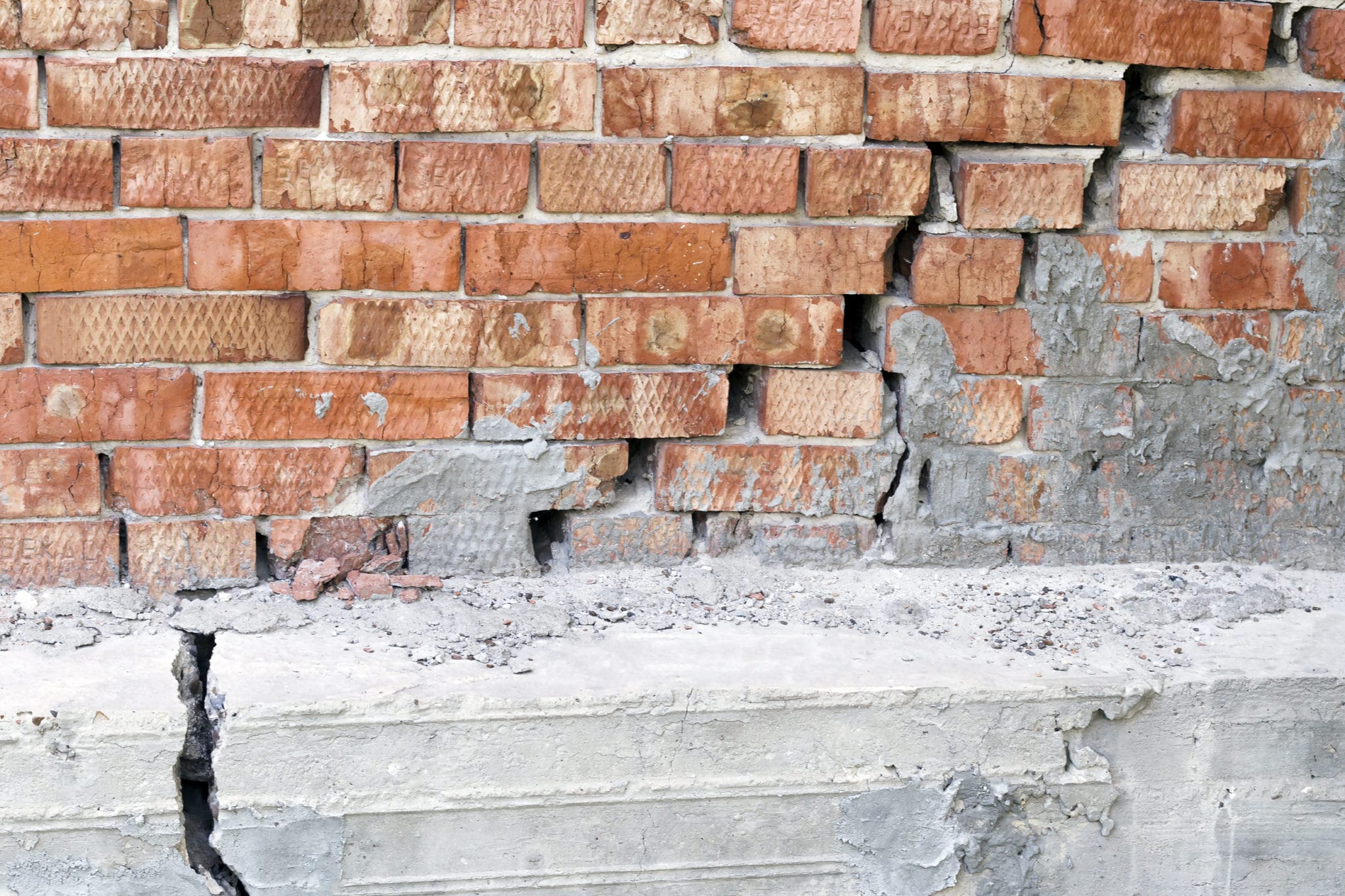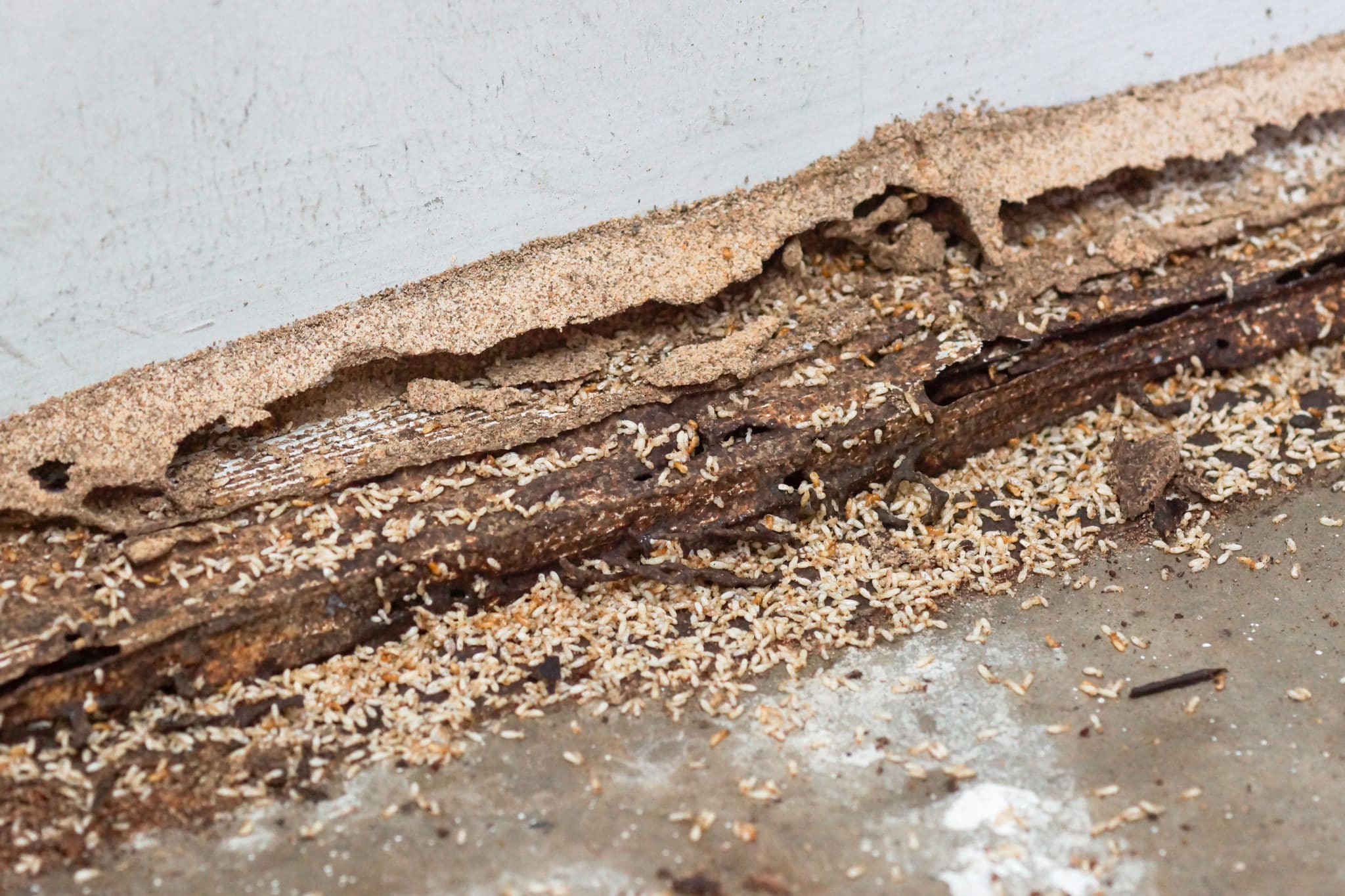Top E&O Claims Claim 4: Mold
Last Updated November 22, 2023

Even if you’re not inspecting for mold—but especially if you are—it’s important for home inspectors to know how to avoid a mold claim.
Why are mold claims common?
Regardless of whether or not you decide to perform mold screenings, clients can file mold claims against you. Mold claims are the fourth most common type of allegation against home inspectors, and its claims are costly. In 2004, the number of mold claims in general, including those against home inspectors, increased by more than 1,000 percent in some areas. Mold claims continue to be one of the most frequent claims we receive at InspectorPro Insurance, and that doesn’t look to be changing.
A possible health risk and a costly issue to fix, mold deters many potential homebuyers away from otherwise great finds. Others who buy a home, only to find mold in it later, frequently look for someone to blame, leaving you, the inspector, with a sizable target on your back. Although how mold affects people is still largely up for debate, and extreme health claims often lack scientific support, mold’s potential side effects spook many homebuyers, and that fear can influence mold claims’ price point. With many clients fearing and misunderstanding mold’s nature and side effects, it is important to know how to deter mold claims.
Where is mold damage common?
Mold needs moisture to grow. Many areas of the home can get damp and humid. An unpleasant, musty odor may indicate when mold is near; however, only a careful survey of the property will reveal what is and what isn’t plagued by mold.
For a breakdown of common mold issues by room, see the graphic below:
Also keep in mind that, when it is wet and humid outdoors, chances are that it could be wet and humid inside the house. Know that you are likely to see seasonal changes in the frequency of mold, and plan accordingly. Disasters, such as hurricanes and floods, also can lead to escalated mold cases. Consider the context and the history of the home so that pertinent information may inform your inspection.
What can inspectors do?
Set expectations.
It’s important that your clients understand both mold and home inspections. Thus, when sampling for mold, you should give context and clarity to your findings.
“Giving your clients a report from the mold lab isn’t going to mean anything to the client because they don’t know anything about the types of mold and what [they] mean,” explained Robb Graham, President of the Professional Mold Inspection Institute (PMII) in Madison, South Dakota, which provides mold training and certification for inspectors and remediators. “You have to understand what the lab is doing, how to analyze its results and how to give that information to the client in a meaningful manner.”
Making sure clients receive and understand the inspection’s limitations will help them look at its results realistically.
Have an advisement.
What about inspectors who aren’t performing mold inspections? How do they prevent meritless mold claims?
In some regulated states, home inspectors that observe mold-like substances may need to document it in their reports. Kevin O'Hornett of ProSpex Inspection Consulting, LLC in Colorado shares an example of how an inspector might do this in their inspection report:
“A substance consistent with bio-organic/mold was observed on (fill in the specific location). Sampling and analysis of any substance in the interior or exterior environment for the purpose of definitively identifying bio-organic matter/mold is specifically excluded in this inspection. If such sampling and analysis is desired, individuals or companies qualified to perform such work should be contacted.”
Additionally, home inspectors not sampling for mold and not required to identify mold by state regulations should include an exclusion in their contracts. Our claims team recommends prominently including a mold advisement in your pre-inspection agreement. An advisement, which is often included with a limitation of liability clause, states what is and what isn’t covered in your inspection.
It’s important to make this advisement prominent to decrease the chance that your client could overlook it. Our claims team estimates that few inspection clients read the entire pre-inspection agreement, making it essential to make any advisement stand out.
For example, our claims team suggests using boldface type or another color or font type. Doing so will highlight the advisements related to mold and other additions to both your pre-inspection agreement and your report. Some inspectors include an advisement in the footer of every page of their inspection reports. Additionally, have clients initial or sign any advisements to guarantee they are aware of and understand the terms.
Have claims protection.
Even if you do everything right, you can still get a mold claim. That’s why it’s essential for home inspectors to carry errors and omissions insurance (E&O) for defense and payout help. Contact your InspectorPro broker or submit an application with us to receive a home inspection insurance quote at no obligation.
The ASHI Reporter published this article in December 2018. See how this story appears in print below.
Note: We updated this article for clarity and accuracy on April 21, 2022.







